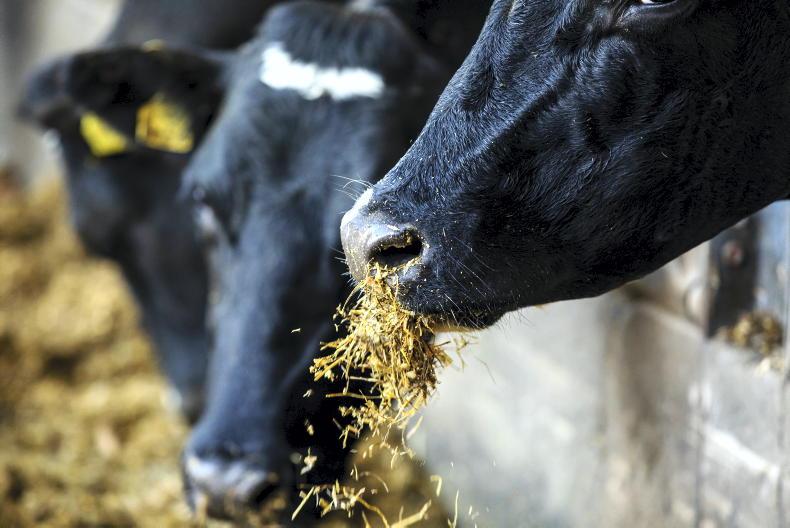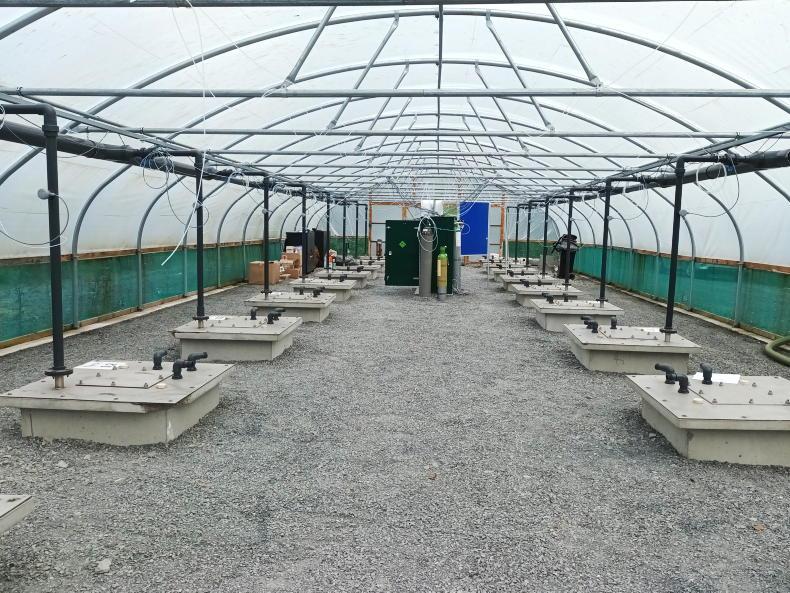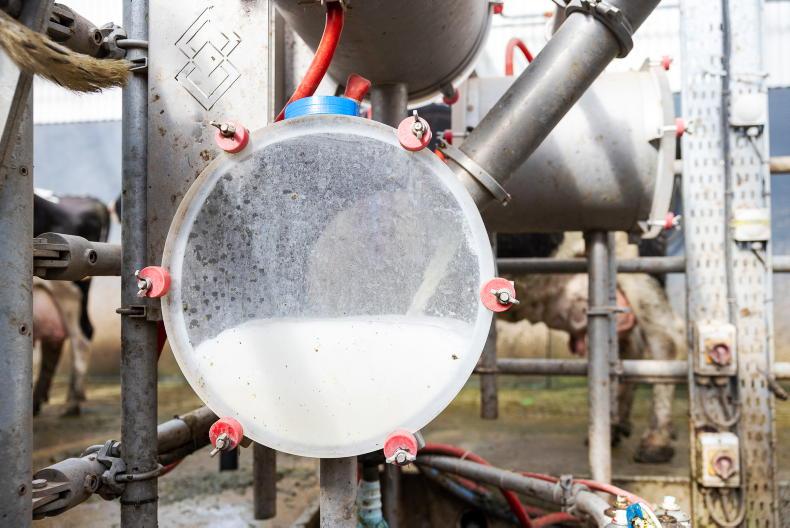On-farm research in NI, led by scientists at the Agri-Food and Biosciences Institute (AFBI), has highlighted that operating a feed-to-yield system does not necessarily prevent a drop off in butterfat and protein percentages in high-performing dairy cows.
Reported in the scientific journal Animals, the study looked at performance of 3,471 cows on 26 farms across NI, which calved down between August 2018 and February 2019. Measurements were taken from cows two to five months post-calving, with herds fully contained throughout the period, predominantly Holstein Friesian and all cows offered feed-to-yield. Eighteen herds were pedigree registered.
In the year prior to the study, the farms were producing over 8,800l of milk per cow from 2.9t concentrate per head.
Results from the study showed the highest yielding groups produced significantly lower butterfat percentage, especially when comparing groups of cows in their fourth (or more) lactation.
Some of this was thought to be due to genetics (farmers historically selecting for volume over constituents), although it can also be explained by high concentrate diets resulting in more starch and less fibre in the overall ration.
This starch is rapidly fermented in the rumen, causing pH to drop and greater production of trans-fatty acids which can inhibit milk fat synthesis in the mammary gland.
Milk protein was also down in the higher-yielding groups, and similar to what was found with butterfat, there were bigger differences between high and low yielders when cows were in their second lactation and beyond.
Normally, milk protein is expected to increase when more energy goes in, so any ‘non-genetic’ component of the reduction “is difficult to explain”, notes the AFBI paper, adding that it may be related to poorer energy balance in high yielding cows in early lactation.
Read more
AgriSearch offers new PhD opportunities
Higher milk yields from four-cut silage systems
On-farm research in NI, led by scientists at the Agri-Food and Biosciences Institute (AFBI), has highlighted that operating a feed-to-yield system does not necessarily prevent a drop off in butterfat and protein percentages in high-performing dairy cows.
Reported in the scientific journal Animals, the study looked at performance of 3,471 cows on 26 farms across NI, which calved down between August 2018 and February 2019. Measurements were taken from cows two to five months post-calving, with herds fully contained throughout the period, predominantly Holstein Friesian and all cows offered feed-to-yield. Eighteen herds were pedigree registered.
In the year prior to the study, the farms were producing over 8,800l of milk per cow from 2.9t concentrate per head.
Results from the study showed the highest yielding groups produced significantly lower butterfat percentage, especially when comparing groups of cows in their fourth (or more) lactation.
Some of this was thought to be due to genetics (farmers historically selecting for volume over constituents), although it can also be explained by high concentrate diets resulting in more starch and less fibre in the overall ration.
This starch is rapidly fermented in the rumen, causing pH to drop and greater production of trans-fatty acids which can inhibit milk fat synthesis in the mammary gland.
Milk protein was also down in the higher-yielding groups, and similar to what was found with butterfat, there were bigger differences between high and low yielders when cows were in their second lactation and beyond.
Normally, milk protein is expected to increase when more energy goes in, so any ‘non-genetic’ component of the reduction “is difficult to explain”, notes the AFBI paper, adding that it may be related to poorer energy balance in high yielding cows in early lactation.
Read more
AgriSearch offers new PhD opportunities
Higher milk yields from four-cut silage systems









SHARING OPTIONS